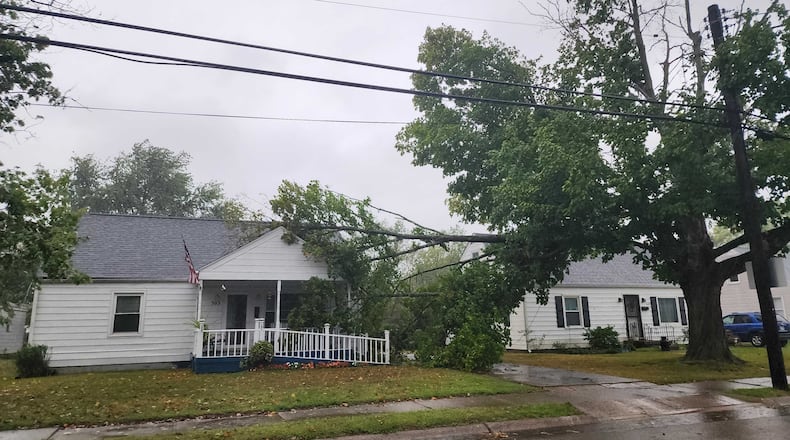More than 1,000 customers on Sunday in the Middletown and Monroe areas were without electricity and had been since Friday night, according to Duke’s outage map.
The Hamilton area had less than 100 homes without power on Sunday provided by Duke Energy.
A large area between Lebanon and Mason in Warren County was still without power Sunday afternoon, according to the Duke map.
With a significant number of lineworkers, tree trimmers and other support personnel on the ground working to restore service – the company said it expected nearly all customers to be restored by Sunday night. The company will communicate estimated times for restoration directly with any customers who, due to extensive damage in their area, may not be restored Sunday night.
“Despite the challenging conditions throughout this storm, our crews continue to make very steady progress on restoration,” said Clint Carnahan, Duke Energy Midwest storm director. “I want our customers to know we will continue working until every customer is restored.”
“We appreciate the patience of our customers as we work through this challenging storm response. Our crews have been out around the clock in challenging and variable conditions and continue to make excellent progress,” said Duke Energy Ohio/Kentucky President Amy Spiller. “We have a full complement of crews out in the field – with additional resources that have arrived from other states – that are working and fully engaged to restore power today.”
What to do if you are still without power
Outages can be reported online, through the Duke Energy mobile app, by texting OUT to 57801 or by calling 800-228-8485.
The most up-to-date information about restoration efforts can be accessed on Duke Energy’s Outage Map or by enrolling in Outage Alerts.
Weather this week
The remains of Helene will push east of the region Monday evening, according to the National Weather Service in Wilmington. The region will then be in-between systems Monday night into Tuesday morning. There will still be low level moisture in place.
Precipitation chances will be in place on Tuesday into Tuesday night, especially Tuesday evening, as a system quickly moves through the region bringing with it cooler air to the region. By Wednesday morning western portions of the region will have dropped into the 40s. Highs on Wednesday will range from the upper 60s to lower 70s, according to the NWS.
How it started
Hurricane Helene killed and destroyed far and wide — from Tampa to Atlanta to Asheville, North Carolina, its high winds, heavy rains and sheer size created a perfect mix for devastation.
The storm made landfall late Thursday along a largely undeveloped expanse of pine trees and salt marshes on Florida’s Big Bend coast, but it immediately displayed its far-reaching power several hundred miles away. As of Sunday morning, at least 64 people were confirmed killed.
Tampa Bay was inundated with a massive storm surge that sent water up to people’s attics. Atlanta got more than 11 inches of rain, more than any 48-hour period in recorded history. So many trees were toppled in South Carolina that at one point more than 40 percent of the state lost electricity. In North Carolina, dams were in jeopardy of failing and entire communities are cut off by floods. Floodwaters submerged a hospital in Tennessee so quickly that more than 50 patients had to be rescued from the roof via helicopter.
Credit: Nick Graham
Credit: Nick Graham
Credit: Nick Graham
Credit: Nick Graham
How did a single storm unleash destruction so far away?
Dan Brown, a specialist at the National Hurricane Center near Miami, said Helene had all the attributes that make a storm widely destructive.
It was large, about 350 miles (560 kilometers) wide. It was strong, with winds reaching 140 mph (225 kph) when it made landfall late Thursday, creating widespread storm surge. It carried heavy rains. And it was fast, speeding north at up to 24 mph (39 kph) offshore and 30 mph (48 kph) inland.
He compared the geographic scale of Helene’s destruction to 1972′s Hurricane Agnes, 1989′s Hurricane Hugo and 2004′s Hurricane Ivan.
“Systems that get very powerful, large and fast moving unfortunately do bring the potential for impact and damage well inland,” Brown said Saturday.
The Associated Press contributed to this story.
About the Author


